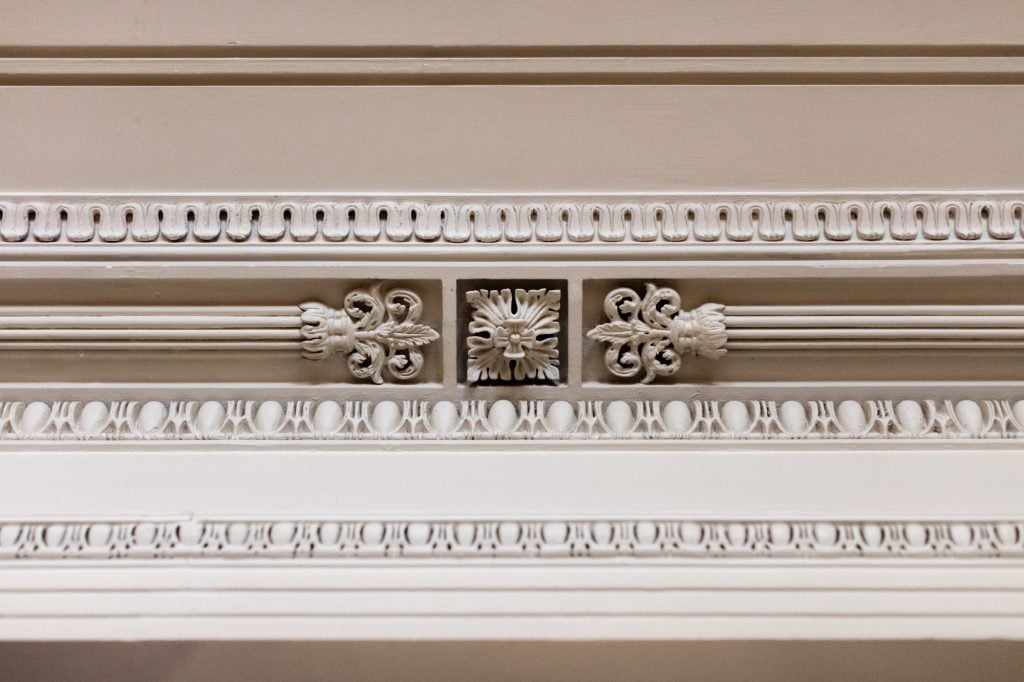Museums & Institutions
New York’s Merchant’s House Museum Fears ‘Irreparable Damage’ From Proposed Construction
The museum warns that vibrations from construction could cause its delicate plaster walls to crumble.

The museum warns that vibrations from construction could cause its delicate plaster walls to crumble.

Adam Schrader

The Merchant’s House Museum in New York is warning of “irreparable damage” to its delicate structure after a city department voted to approve the development of a new building next door.
The museum is in a historic home in the NoHo neighborhood of Manhattan, built in 1832 and once owned by the wealthy merchant Seabury Tredwell. It is preserved to show what life was like for the merchant class when New York was a bustling port city in the mid-1800s and was the first building to receive landmark status in the city after the passing of a landmark preservation law in 1965.
The Landmarks Preservation Commission held a meeting on December 12 to decide whether a garage and repair shop at 27 East 4th Street, designed by Herman Kron and built in 1945–46, could be demolished for the construction of a new building, city documents show. The museum is located at 29 East 4th Street.
A 2021 document on the city website for the proposed building shows that the project was designed by the firm BKSK Architects. Artnet News has reached out to the firm for more information about the project, a 95-foot tall building with six floors and a storefront on the ground floor.
“The LPC voted to approve the development next door to the Merchant’s House, in spite of overwhelming and unanimous opposition from the community, preservation organizations, public officials and, of course, from the Merchant’s House and our engineers and preservation architects,” the museum said in a statement on Instagram.
The museum alleged that engineers for the developer “admitted” that they were unaware of standards to mitigate damage to historic decorative plaster. It added that none of the none of the participants in the meeting were aware of a study the museum commissioned that confirmed irreparable damage “will take place.”
For its part, the LPC mandated that the developer monitor vibration from construction, a primary contributor to damage. But the museum said that wasn’t enough. By the time such monitoring systems alert to damaging vibrations, the damage has already occurred, it said.
In a further post on Instagram, the museum explained that how plaster was used in 19th century building construction and why it is so delicate and necessary to preserve. According to the post, the museum’s intact original ornamental plasterwork is considered the “finest surviving” from the period, noting that nearly every area of the house boasts exquisite ornamental plasterwork. The walls and ceilings are all also made of plaster, a material considered strong, sound-proof and fire resistant at the time.
Usually, three coats of plaster were used. The reason the vibrations from construction could be catastrophic for the museum is because of the way the first coat was applied. In this “scratch coat,” wet plaster was gently pressed onto and between wood laths, the foundation of a plaster wall or roof.
“The moist plaster slumped over the back of the laths, forming ‘keys,’ which held the heavy plaster in place,” the museum said. “The sustained vibrations that the Merchant’s House will experience if construction next door moves forward can, and most likely will, break the plaster ‘keys.’”
If the plaster keys holding the wall in place break, all the plaster could come crumbling down.
“Today’s vote by the LPC to greenlight a development that is certain to cause irreparable damage to the Merchant’s House Museum is a warning to every other landmark in New York City,” the museum said. “If the Merchant’s House, one of New York’s most treasured historical assets, can be subjected to adjacent construction that will destroy its historic fabric, then every landmark in New York City is at risk.”
The Merchant’s House Museum said it plans to take “aggressive legal action” to stop the development and is asking for donations to its legal fund.
More Trending Stories:
Art Dealers Christina and Emmanuel Di Donna on Their Special Holiday Rituals
Stefanie Heinze Paints Richly Ambiguous Worlds. Collectors Are Obsessed
Inspector Schachter Uncovers Allegations Regarding the Latest Art World Scandal—And It’s a Doozy
Archaeologists Call Foul on the Purported Discovery of a 27,000-Year-Old Pyramid
The Sprawling Legal Dispute Between Yves Bouvier and Dmitry Rybolovlev Is Finally Over